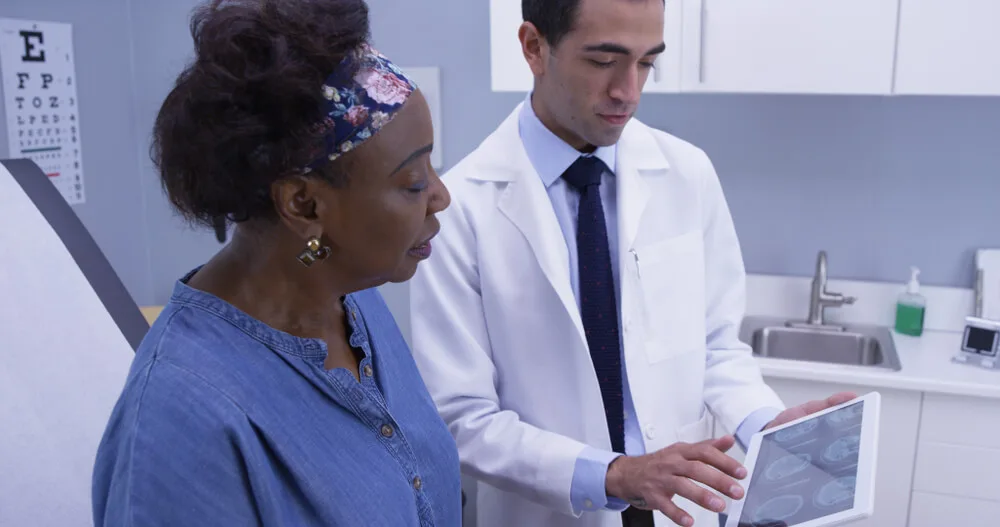
Image via Shutterstock
The overall number of children who have died from COVID is low, but 78% of the children who died were Hispanic, Black, or Indigenous.
After several months of remote learning and quarantining, children across the United States are returning to the classroom. But according to a new report from the Center for Disease Control (CDC), families of color may have a lot more to fear with in-person schooling amid the coronavirus pandemic.
The report, released on Wednesday, found that most deaths among children and adolescents under the age of 20 are Hispanic, Black, or Indigenous. The CDC monitored more than 390,000 coronavirus cases among people under 21 between Feb. 12 and July 31. It found Hispanic, Black, and Indigenous children made up 78% of the COVID-related deaths, even though these three ethnic groups account for 41% of the population. That is an alarmingly disproportionate death rate, and experts say it highlights structural discrimination in the country’s healthcare system.
The CDC attributed the disproportionate death toll to socioeconomic inequities adversely affecting communities of color, including “crowded living conditions, food and housing insecurity, wealth and educational gaps, and racial discrimination.” The report also mentions that adults—many of them parents—from marginalized communities are likely to be “essential workers” and have a higher risk of coronavirus exposure. As a result, working parents can further expose the virus to their children and relatives at home.
Deaths for children and adolescents under 21 make up less than 1% of the nearly 200,000 deaths reported in the United States. But the disproportionate death rate also affects adults. Non-white adults are twice as likely to die from the coronavirus than their white counterparts. Another CDC report found that Black people made up 33% of hospitalized patients, but made up 18% of subjects in the study.
Dr. Ebony Lawson, a practicing physician at Advocate Trinity Hospital in Chicago, and Dr. Alicia Fernandez, the director of the Latinx Center of Excellence at UCSF, said they are seeing patients who have to choose between working in-person or facing poverty, and bringing the coronavirus to their children.
Exposure to the virus for essential workers could have been minimized, according to Fernandez.
“We need to focus on workplace protections,” she said. “That is how many people are being infected and bringing the infection home to their kids. We need clear guidance and mandates that help employers figure out what to do to protect their workers and their business.”
According to the CDC, the racial inequities found in the COVID-19 death count can also be linked to the “lack of [accessbility to] insurance, child care, transportation, or paid sick leave” among marginalized communities.
Lawson said racial disparity is also rooted in pre-existing conditions that are more prevalent in Black communities.
“Although there is still much more, we as a medical community stand to learn about this virus,” Lawson added. “We do know that comorbid diseases [or pre-existing conditions] such as obesity and diabetes place people at a much higher risk of having a serious illness or even death from COVID.”
And lack of healthcare access was around well before the pandemic.
“Limited or no access to adequate healthcare very much predates this pandemic, but indeed laid the foundation for the increased [COVID-related death] rates in the black and Hispanic communities,” Lawson said.
Both Lawson and Fernandez agree that a crucial element in challenging racial inequities in medicine primarily comes down to access to health care and expanding coverage to more immigrant and low-income communities. One way to do that is by expanding Medicaid coverage throughout the United States.
“Medicaid expansion has been an important tool in increasing access to health care for low-income people including Latinos, African Americans, and others,” Fernandez added. “We cannot improve racial disparities without addressing and improving health care access.”
Lawson said investing in education, housing, and other resources in low-income communities of color could also alleviate some of the pains in public health.
“I think the US should also invest more to look at the social determinants of health,” the Chicago-based doctor added. “Poor health comes not just from a lack of access to health care, but also from untreated mental illness, limited access to food or a safe place to exercise, inadequate housing, inadequate schooling and education, and many more factors.”
While it will take substantial government reform (and funding) to make significant strides to overcome the racial disparity seen in the COVID death rate and other medical conditions, people can still make a crucial impact through small yet mighty actions.
“Supporting masking and social distancing help address racial equity in health as these measures help bring down COVID prevalence,” Fernandez added. “This is something we should all do.”
Politics

Teamsters and UPS Reach Tentative Deal to Avoid Strike, 340,000 Workers to Get Raises
The tentative deal represents a huge win for full- and part-time UPS Teamster workers, who would get significant pay raises and better working...



One Republican Senator Is Blocking 265 Military Promotions, Leaving the Marines Without a Confirmed Leader
Sen. Tommy Tuberville's decision means these military officers are not getting the pay raises they’re owed, cannot move their families to wherever...
Local News



Teamsters and UPS Reach Tentative Deal to Avoid Strike, 340,000 Workers to Get Raises
The tentative deal represents a huge win for full- and part-time UPS Teamster workers, who would get significant pay raises and better working...



One Republican Senator Is Blocking 265 Military Promotions, Leaving the Marines Without a Confirmed Leader
Sen. Tommy Tuberville's decision means these military officers are not getting the pay raises they’re owed, cannot move their families to wherever...




